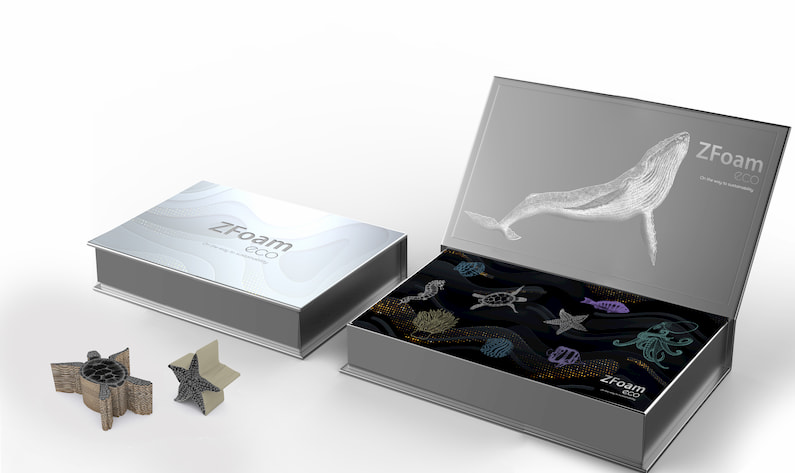The foams that we all know are an evolution of rigid plastics and have different characteristics. Foams and plastics have many differences, but the main one is their weight and, therefore, the drastic reduction in the consumption of raw materials for their manufacture. A foam weighs between 1.5 and 10% of what a rigid plastic usually weighs and therefore the consumption of resources is much lower.

Another important point in sustainability is reuse. At ZFoam we use high-quality foams that are used in high demanding applications such as packaging for automotive parts or packaging for transport in museums, art galleries, etc. They are foams that are used on multiple occasions, with a very long service life and that maintain their properties over time.
Apart from this, another of the key points of sustainability is recyclability. For several years, ZFoam has established agreements with customers and recycles foam waste from many of its clients. These residues have a second application such as bases for sport fields, playgrounds, foams for secondary applications, etc.
At ZFoam we are clearly committed to these three pillars of sustainability. In addition, we have the UNE-EN ISO 14001 certification, as a sign of the commitment assumed in the protection of the environment through the management of the risks associated with our activity. The company currently recycles more than 95% of the waste of raw materials and has started on the path to find materials that are more environmentally friendly. Under the ZFoam ECO brand we have a series of recycled, recyclable and bio-based foams:
- ZFoam ECO S33: a low-density polyethylene foam. This material is 100% recyclable and classified in the “4 LDPE” group per the SPI. .
- ZFoam ECO ARK: a low-density polyethylene foam, containing up to 50% recycled matter, 100% recyclable and reusable. Classified in the “4 LDPE” group per the SPI.
- ZFoam ECO RCL: a material containing 65% recycled matter.
- ZFoam LJ 35 Bio: is a closed-cell polyolefin foam made from a 100% renewable raw material biopolymer. Its origin is in cane sugar. It has a positive carbon footprint (it captures CO2 from the atmosphere during its production) and the same physical properties as standard materials. It is available in blue, green and natural color.
This is only a starting point in which new sustainable, recycled, recyclable, plant-based and biodegradable materials will be gradually added.
If you are interested… do not hesitate to send us an email to zfoam@zfoam.com!







